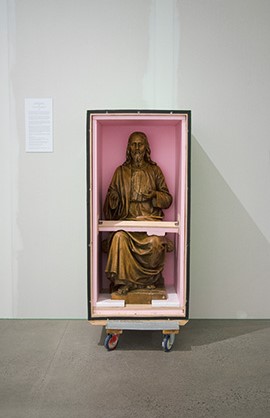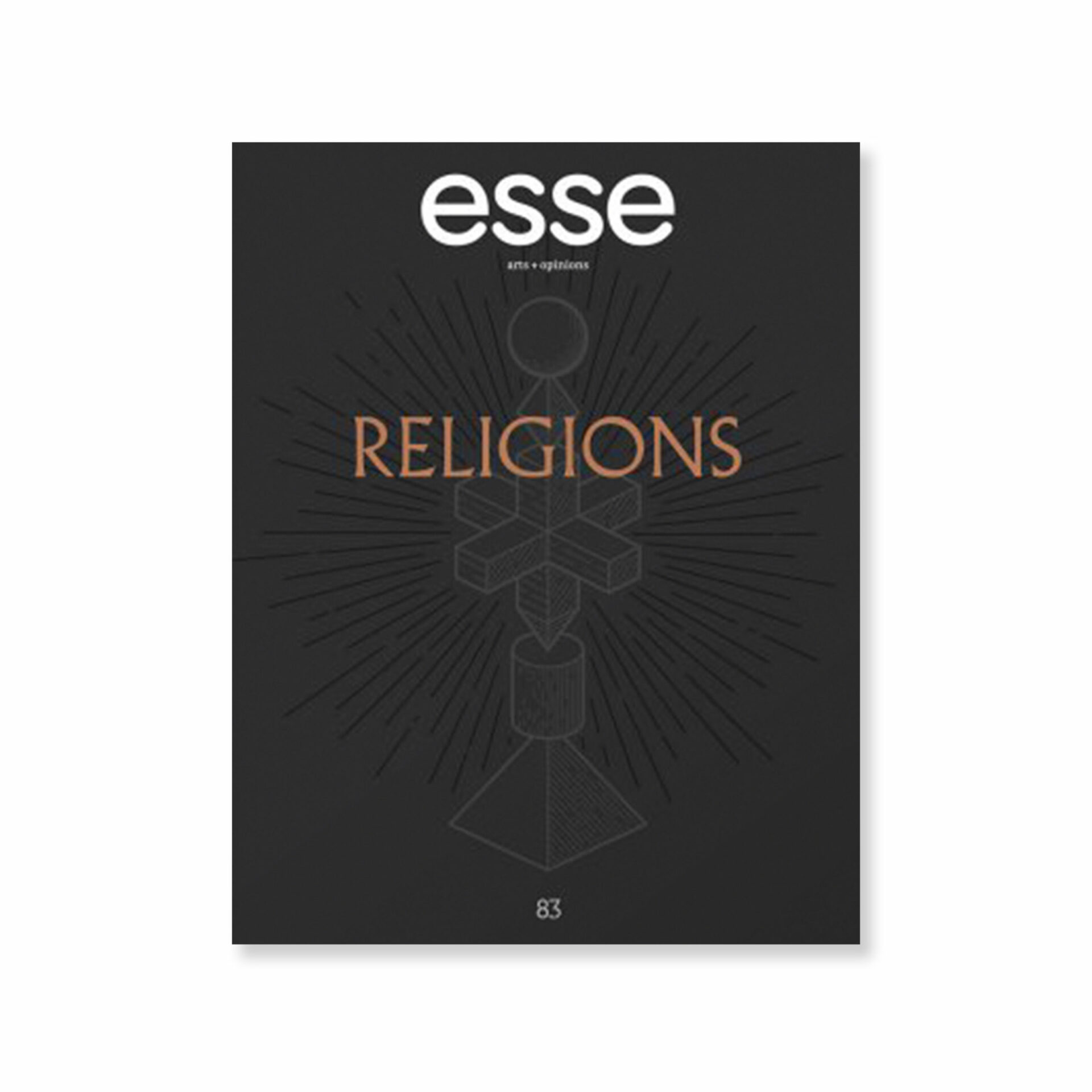
After his exhibition War and Peace at VOX in spring 2014, which recounted the time spent on the run in Québec by French fugitive — and “public enemy number one” — Jacques Mesrine, Michael Blum continues his exploration of Québec history with his exhibition Our History || Notre histoire. The undertaking is ambitious, if not Herculean: show the dual Québec and Canadian identity from its “origin” to now. Blum began the project, which was completed during the Galerie de l’UQAM’s summer residency program and shown at the gallery from September 2 to October 4, 2014, in February 2014 with an email survey sent to over six hundred people in the cultural and art fields. The survey concerned the definition of Québec, the differences between Québec and Canada, and the possibility of another language being substituted for French and English. It also included the following question: “If a museum had to preserve the history of the differences between Canada and Québec, how would you envision it?” Blum’s own answer to this question is an exhibition presented as a museum — or, more precisely, as two museums, one devoted to Québec identity and the other to Canadian identity. The exhibition thus falls within the genre of “artist museums,” in which, Anne Bénichou posits — in a book recently written on the subject — “the artist is not so much a producer of objects, but a manipulator of signs.”1 1 - Anne Bénichou, Un imaginaire institutionnel. Musées, collections et archives d’artistes, Paris, L’Harmattan, 2014, p. 27. Blum’s work consists in creating a narrative through which a vast array of objects (human remains, artworks, common consumer products, tools, archaeological artefacts, liturgical objects) intended to reflect aspects of Québec and Canadian identity can be displayed. Visitors can discover this narrative through the wall texts that introduce each section of Blum’s imaginary museum, and through the extremely detailed labels that complement each object, describing its origins and significance to “our history.”

Vue d’exposition | exhibition view, Notre histoire | Our history,
Galerie de L’UQAM, Montréal, 2014.
Photo : L.-P. CÔTÉ
The Galerie de l’UQAM published a book containing the views of eighty-six respondents who completed the survey questionnaire, as well as Blum’s “diary,” in which he explains the project’s genesis. We learn that he first encountered the issue of a dual Québec – Canadian identity as a bureaucratic reality, when as a new immigrant, he needed to renew his work permit. The administrative hassle caused by the two levels of government took on nightmarish proportions worthy of a Monty Python sketch. As months went by, Blum realized that the question of a dual Québec – Canadian identity was taboo, and that the people he asked about it left him feeling that he was “being inelegant, or downright impolite.” So, to advance through this minefield, the artist chose humour, a “mood” that has the ability to defuse tension and allows for the expression of contradictions.

Jean Tremblay, statue de saint-inconnu, 1780, artéfact dans l’exposition | artefact in exhibition, Notre histoire | Our history, Galerie de l’uqam, Montréal, 2014.
Photo : L.-P. CÔTÉ
The exhibition takes the form of two museums that turn their backs on one another, each devoted to expressing the exceptional character of its nation. The two opening galleries, dedicated to the respective nation’s sacred foundational sites and placed under close surveillance according to the warning signs posted, set the tone. On the Québec side, the founding act came from the sky in the form of a meteorite, La Roche sacrée, a genuine “Mecca for Quebecers” (in fact, a cardboard rock, one of the few objects made for the exhibition). On the Canadian side, the nation finds its origin deep in the earth in the form of Holy Holes (in fact, electrical outlets in the gallery floor), which have been providing Canadians with clean and renewable energy since prehistoric times. It is clear that beneath the mockery is a jibe at Québec’s obsession with heritage that raises every plot of land to the status of a sacred site of remembrance (such as the Percé Rock in Gaspé), on the one hand, and at the exploitation of Alberta’s tar sands, seen as God’s gift to Canada’s economic growth, on the other. However, by humorously anchoring the foundation of the two nations in time immemorial, Blum also more soberly points out that the anxiety over identity shared by Québec and Canada stems from the fact that these two “young” nations, evolved from settler colonization, cannot claim any historical and territorial roots that are beyond a few centuries old. This dual reading, at once comical and serious, is present throughout the exhibition. On the Canadian side, the exhibition continues with a large gallery in which the nation’s most remarkable technical inventions are displayed — from the snow blower to the paint roller, from the egg carton to the plastic garbage bag. On the Québec side, artworks and religious artefacts predominate (the artist relied mainly on the Galerie de l’UQAM’s art collection), giving rise to various and increasingly extravagant interpretations. Among the objects displayed are Synapse d’André Breton,a page bearing only a vague fingerprint, excerpted from a secret book that the founder of Surrealism is supposed to have written in Percé, in the summer of 1944, while madly in love with Élisa Claro, and the skull of Iroquois Chief Donnacona, who was forcibly brought to France by Jacques Cartier at the end of his second voyage. In passing, Blum does not refrain from taking a swipe at the political timidity of Quebecers;homo quebecus, as he writes on the label of the painting L’attente chez le médecin, is characterized by the fact that Quebecers wait: they wait for the doctor, for the bus, for sovereignty. The last gallery in the Québec museum is a large worksite full of rubble, whose main wall is covered by “glorious achievement[sic],” hand-written remarks reflecting the large and small events of Québec’s contemporary cultural history (the Charbonneau Commission, the Champlain Bridge, Kahnawake, the laws of exception, Arthur Porter, fear of outsiders, and others).
In the end, the two nations turn their backs on one another, ignoring each other entirely, if only through the exclusive use of English on one side and French on the other. The only thing they share is the long, dark tunnel that visitors must take to exit the two museums, the tallest of whom will knock their heads against the tunnel’s gradually downward-sloping ceiling — a fitting metaphor for culture shock. [Translated from the French by Oana Avasilichioaei]
